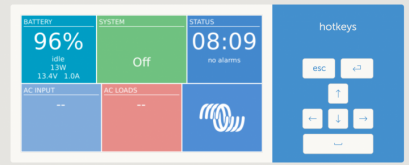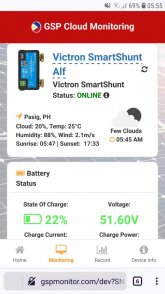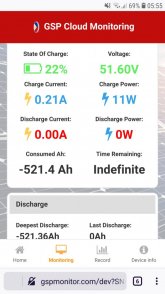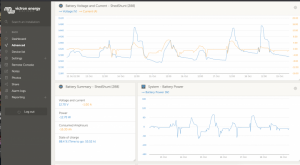clarkpeacock
New Member
- Joined
- Jun 6, 2020
- Messages
- 83
As previously posted in the newcomers section of this fine forum, I am planning on replacing my existing 12v system with a 24v system, and now well on the way with that project.
I have acquired 8 almost new Leoch AGM 6390 batteries (6v 390ah each) to use with 8 x 250W panels, 4 connected to an EPever 30A mppt and 4 to an Iconica 3KW hybrid inverter/charger/mppt. Still working out best config for these but probably 2p2s as panels are 32voc. Lots of detail being decided as I go along - always something new to learn
One major change is that the new system is being housed in a purpose built enclosure outside of the cabin, so not so easy to monitor as the current one which is in a storage cupboard indoors. So, I want to put in some sort of wireless monitoring and come across this Chinese beauty! https://www.ebay.co.uk/itm/383085739438
Seems too good for the price, so probably is... Anyone used one, or got any better ideas what to use? Maybe something using bluetooth to my phone?
I know I could just replace the whole lot with Victron and use the built in monitoring.... One day when budgets allow or I win the lottery!
Thanks.
I have acquired 8 almost new Leoch AGM 6390 batteries (6v 390ah each) to use with 8 x 250W panels, 4 connected to an EPever 30A mppt and 4 to an Iconica 3KW hybrid inverter/charger/mppt. Still working out best config for these but probably 2p2s as panels are 32voc. Lots of detail being decided as I go along - always something new to learn
One major change is that the new system is being housed in a purpose built enclosure outside of the cabin, so not so easy to monitor as the current one which is in a storage cupboard indoors. So, I want to put in some sort of wireless monitoring and come across this Chinese beauty! https://www.ebay.co.uk/itm/383085739438
Seems too good for the price, so probably is... Anyone used one, or got any better ideas what to use? Maybe something using bluetooth to my phone?
I know I could just replace the whole lot with Victron and use the built in monitoring.... One day when budgets allow or I win the lottery!
Thanks.
Last edited:







